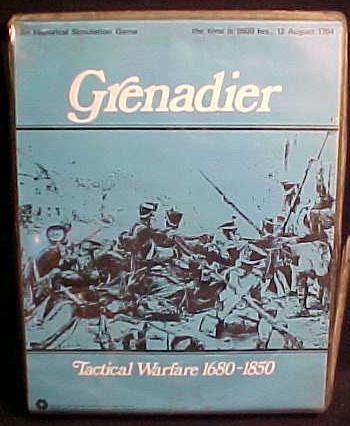Grenadier: Tactical Warfare 1680-1850 (1972) Board Game
Grenadier: Tactical Warfare 1680-1850 is a historical wargame released in 1972, designed by Redmond A. Simonsen and published by SPI (Simulations Publications, Inc.). The game focuses on tactical warfare between the years 1680-1850, covering the Age of Reason and Napoleonic eras. With a hexagon grid system, players must strategize and outmaneuver their opponents to achieve victory on the battlefield.
Game Components of Grenadier: Tactical Warfare 1680-1850
How To Setup Grenadier: Tactical Warfare 1680-1850
Setting up the game involves placing the generic map, distributing the unit counters according to the specific scenario being played, and assigning leaders to their respective units. The game includes sixteen historic battles, each with its own setup instructions. Players must ensure that each unit is correctly positioned on the map, and that leaders are assigned to command their respective forces.
Gameplay Mechanics and Game Objective
Player Experience
Playing **Grenadier: Tactical Warfare 1680-1850** is a complex and immersive experience, particularly suited for history buffs and wargaming enthusiasts. The game requires strategic planning and execution, as players must manage unit movements, fire and shock combat, and leadership roles effectively. The use of skirmishers, the management of artillery, and the balance between fire and shock combat add layers of depth to the gameplay.
Pros
Cons
Personal Thoughts on Grenadier: Tactical Warfare 1680-1850
**Grenadier: Tactical Warfare 1680-1850** is ideal for experienced wargamers and history enthusiasts who appreciate the intricacies of tactical warfare during the musket and cannon era. While it may be too complex for casual players, it offers a rich and detailed gaming experience that simulates the challenges and strategies of historical battles. However, its limitations, such as the generic map and potential balance issues, should be considered before diving in.
We are supported by our audience. When you purchase through links on our site, we may earn an affiliate commission, at no extra cost for you. Learn more.

